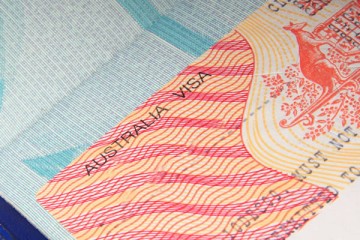Australian Visas
A short overview of Australian visas designed to help you understand your basic requirements if you are planning on moving to Australia
Written on 3 May 2022
In order to either visit or relocate to Australia, official permission must be obtained in the form of a Visa. That Visa will then allow you to enter Australia for a predetermined period of time.
That being said, its definition tends to make it sound much simpler than what it is. Below, we have broken down some key information on the different visa options for expats, to help you better understand what will be required of you through the process of obtaining an Australian visa.
Categories of Australian Visa
The majority of Australian Visa types will usually fall under one of the following categories, each applying to the individuals needs or purpose:
- Working and skilled visas – These allow for someone to travel into Australia and legally work
- Visitor visas – This is usually for short-term travellers not intending to settle in Australia
- Studying and training visas – This includes visas for international trainees and students, as well as their parents or guardian if they are underage
- Family and partner visas – Family visas are mostly issued to those who care for Australian citizens and permanent residents. Partner visas are issued to the spouses (current or prospective) and de facto partners of Australian citizens
- Refugee and humanitarian visas – These are issued to refugees that meet and fulfil Australia’s protection obligations
- Business and Investment visas – Designed to be issued to business owners wanting to either operate a new or existing business in Australia, or wanting to invest into it
- Bridging visas – These types of visas can allow the holder to remain in Australia while their immigration application continues to be processed
Within these main categories are then multiple differing visa types, each with its own specifics and requirements to meet. The collection of visa types is detailed and extensive, for example, there are over 20 varying visa types that fall under ‘Family and Partner Visas’ alone.
What kind of visa do I need to apply for?
Australia's Department of Home Affairs website (www.homeaffairs.gov.au/) has a detailed breakdown on their extensive visa options, with a ‘Find a visa’ tool. This tool provides you with all appropriate visa options available to you, based on the information that you provide.
This tool will also be able to tell you which supporting documents will be necessary depending on which visa is being applied for, although these may vary depending on your own country of residence.
How do you apply for an Australian Visa?
The process of applying for an Australian visa will differ depending on the individual and what your nationality is.
As a general rule, you can apply for an Australian visa either in person through an Embassy or Consulate, or online.
When should I apply for my visa?
This will largely depend on what type of visa you will be applying for. Different visas hold very varying time scales.
Although it is important to note that you should not book flights or make any other serious travel commitments until you have your Australian visa. If your visa application is finalised much later than expected, or is unsuccessful for any reason, you will not be owed any compensation for any financial losses.
It is also key to understand that visa applications are assessed on a case-by-case basis by the Australian High Commission Embassy, and that the overall processing times will vary depending on the individual circumstances of the applicant.
Some of the circumstances that may influence the speed of your application process can be:
- Whether the applicant has successfully filed a full and complete application, without any missing information or supporting documents necessary
- Whether the applicant responds to any formal requests from the Embassy for further/ missing information in a timely manner
- Whether the visa being applied for requires more detailed, time-consuming checks
- Whether there is a delay from any outside parties that have had additional information requested from them (usually necessary with checks on national security matters, health and character)
- Whether the number of spaces available in the migration programme is timely/ appropriate
- Whether there has been an unexpected rise in demand for one specific visa application type, or whether it has been received during a peak period of the year
If you are applying for what would be classed as a long-term visa such as an Australian work visa, getting the process started as soon as possible is wise due to its nature. These visa applications tend to take the longest to process, sometimes ranging up to over a year.
EVisitor type visas are usually much faster, due to being done online, with most travellers applying up to a week before their departure.


